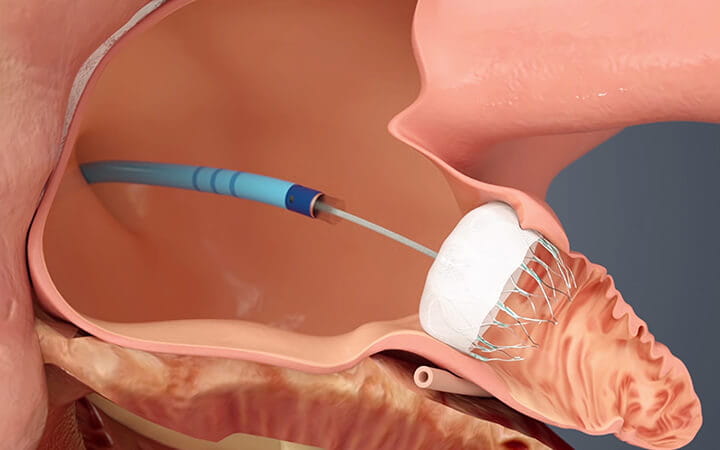Next-Generation Devices for AFib Offer an Alternative to Blood Thinners
June 09, 2022

In atrial fibrillation (AFib), the most common heart rhythm disorder, the two upper chambers of the heart no longer contract normally. Blood-thinners such as warfarin are widely used to prevent blood clots from forming due to AFib. But warfarin – commonly known by the brand name Coumadin – has its downsides, and some patients can’t tolerate the drug.
Fortunately, there is an alternative to blood thinners. It’s an implanted device that prevents blood clots from forming in the hearts of AFib patients.
What is AFib?
During AFib, the upper chambers of the heart – called the atria – fibrillate, or quiver, and don’t contract as they should. The result is an irregular heartbeat. Afib also increases the risk of blood clots forming in the heart and traveling to the brain, causing a stroke.
“If blood is not squeezed out of the top chamber to the bottom chamber, and is sort of hanging out in the top chamber, it’s prone to form blood clots,” says University Hospitals cardiologist Steven Filby, MD of the Harrington Heart & Vascular Institute.
AFib contributes to about 158,000 U.S. deaths a year, according to the Centers for Disease Control and Prevention. Some people don’t know they have it.
“Ten to 30 percent of patients with AFib are asymptomatic,” Dr. Filby says. “Those who do have symptoms can experience shortness of breath, palpitations, chest discomfort, dizziness, lightheadedness and fatigue.”
Blood thinners prevent clots from forming. But they require periodic blood tests. Levels can be affected by diet, and these medications can cause bleeding complications and other side effects.
“The number one reason patients are admitted to the hospital or present to the emergency department for medication-associated side effects is from these medications,” Dr. Filby says.
Left Atrial Appendage Closure: An Alternative Therapy
Some 90 percent of blood clots from AFib form in a small pouch in the heart, called the left atrial appendage. In patients who are poor candidates for blood thinners, doctors can implant a device that seals off the pouch and reduces the risk of stroke.
The minimally invasive procedure is called left atrial appendage closure. A permanent device is implanted with a catheter inserted through a vein in the leg. Over the next few months, tissue will grow over the device, permanently sealing off the left atrial appendage to prevent blood from reaching that area.
The left atrial appendage serves no known purpose. “Just like you can live without your appendix, you can also live without your left atrial appendage,” Dr. Filby says.
The procedure has been shown to significantly reduce the risk of AFib-related strokes and provides a promising alternative to blood thinners for many patients.
Related Links
University Hospitals Harrington Heart & Vascular Institute has a team of board-certified, fellowship-trained specialists dedicated to the care of patients with atrial fibrillation, or AFib. Learn more.


